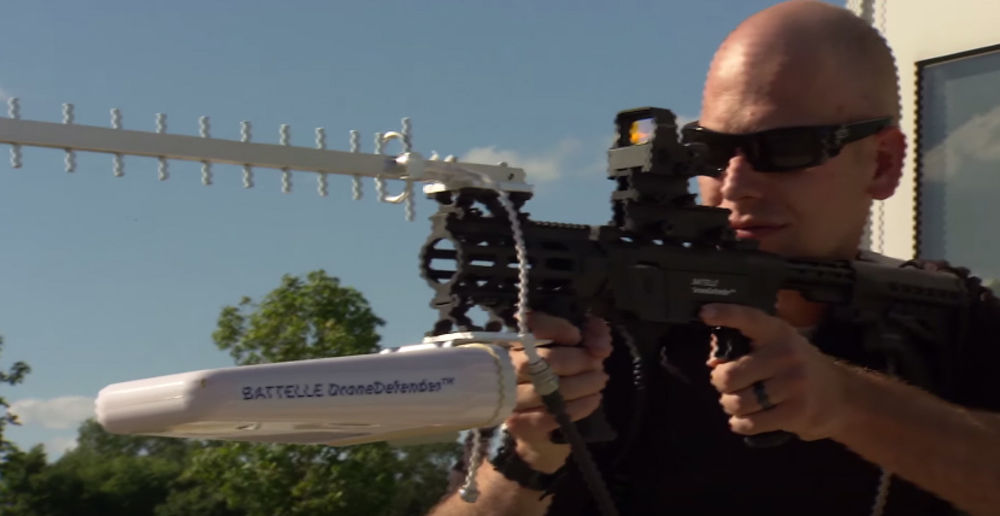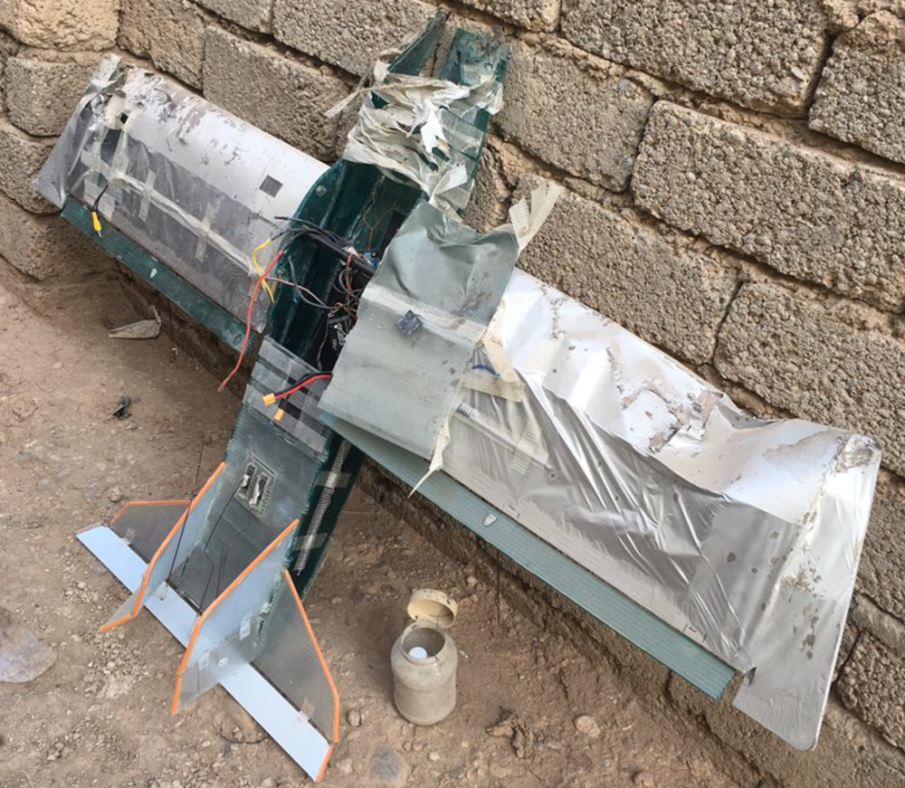IEDs, or Improvised Explosive Devices, have been responsible for three out of five combat deaths in Iraq since the start of the Iraq war in 2003. These bombs come in a variety of forms, often concealed near or beneath driving surfaces to be detonated remotely when poised to do the most possible damage, but recent reports from the ongoing battle between ISIS and coalition forces in Iraq indicate that ISIS may have found an even deadlier use for their explosives: arming drones.
On October 2nd of this year, an ISIS controlled drone armed with an improvised explosive killed two Peshmerga soldiers and injured two French paratroopers in Irbil, Iraq. This development confirmed reports made by Conflict Armament Research that one of their investigators uncovered an ISIS “drone workshop” in Ramadi. The investigator, whose name was not disclosed, reported that he found plywood fuselages and Styrofoam wings inside the building, as well as a disassembled shoulder launched surface-to-air missile. For Conflict Armament Research investigators, the presence of these components together strongly implied that ISIS was trying to “arm their drones with something that would be light enough to be carried by a drone, but also that would have the right kind of explosives for potency,”
Unfortunately, recent reports would seem to indicate that they found the right combination to do just that. ISIS seems to be building their drone IEDs from scratch, as off the shelf drones available to them often don’t possess the necessary battery lifespan or payload capacity to be an effective means of explosive delivery. Instead, they are building these drones out of components they are able to procure through international trade and captured weapon systems. Notably, investigators in the “drone workshop” located a gyroscope sold by the Turkish company Bomec Robot Teknolojileri. These devices are intended only for domestic sale within Turkey and are an integral component when building a navigational system for drones.
The workshop appeared to have been abandoned prior to coalition forces arriving, and if there were any functioning models of ISIS’ drones present, they were taken by the extremists as they evacuated. The absence of any controllers, cameras, or propulsion systems in the lab leaves many questions still unanswered about the drones range, payload or remote control capabilities.
Kurdish forces have reported sightings of ISIS controlled drones as early as last winter, but October 2nd marks the first time any Western fighter has been injured or killed by these remote controlled aircraft. Concerns about ISIS controlled drones has prompted the Pentagon to request funding for a $20 million project to engage and take down these small drones before they are able to reach troops on the ground. The money, according to the Pentagon’s request, would go toward funding the research and development of ways to “counter the effects of unmanned aerial systems and the threats they pose to U.S. forces.”
Reports have emerged of a new weapon in the war against ISIS making its way to the front lines that allows U.S. troops to jam the radio signal controlling the drones, causing them to either land or crash. The Battelle DroneDefender can mount on any rifle with a picatinny rail, weighs ten pounds, and uses restricted radio bands to block both remote control and GPS signals. Although the price for this device has not yet been made public, Popular Science reported its presence in at least one American base in Iraq as early as July of this year.

The DroneDefender may not cause all ISIS drones to simply fall out of the sky. If ISIS uses off the shelf drones without modifying their internal software, the weapon may allow us to force the drones to land, permitting further research into their construction and use of drones for warfare. Most commercial drones come equipped with lost signal protocols that force the drone to land in a controlled manner immediately upon severing its connection with the control unit that steers it.
While there are other anti-drone systems in production and testing, the DroneDefender is the first system designed to be equipped on firearms already in use in the region. U.S. forces, already familiar with their rifles, will experience a shorter learning curve in terms of how to aim the weapon accurately.
Use of drones by terrorist and insurgent groups has risen steadily in recent years as a result of the advances in commercially available drone technology. Until recently, these drones were used for surveillance and even to aid in filming propaganda to be used to attract new recruits to their causes. Attaching explosives to these drones would seem to have been the logical next step for groups like ISIS. However, the difficulty in finding potent enough explosives to be carried by foam and balsa wood aircraft without seriously limiting the range of the drone would seem to be the largest hurdle for the Islamic State and their efforts to weaponize them.
The investigators that uncovered the lab in Ramadi warn that the presence of a disassembled surface-to-air missile in their makeshift workshop could indicate that ISIS is learning how to make smaller, better, more powerful bombs for their drones. Even if they have yet to acquire or master the technology required to create elaborate targeting systems, an off the shelf wireless video camera would provide the Islamic State with an effective, if not simple, targeting mechanism simply by steering the drone toward the intended target remotely.
Already have an account? Sign In
Two ways to continue to read this article.
Subscribe
$1.99
every 4 weeks
- Unlimited access to all articles
- Support independent journalism
- Ad-free reading experience
Subscribe Now
Recurring Monthly. Cancel Anytime.
As commercial drones continue to become more powerful and technologically advanced, it can be assumed that terrorist organizations like ISIS will also expand upon their existing drone capabilities. Hopefully, platforms like the DroneDefender will see widespread distribution in time to quell the threat of these new flying IEDs. Even if ISIS falls before they have an opportunity to create many more explosive aircraft, their use of drones marks a shift in modern combat that will have to be addressed.
Images courtesy of BBC News and Popular Science












COMMENTS
You must become a subscriber or login to view or post comments on this article.